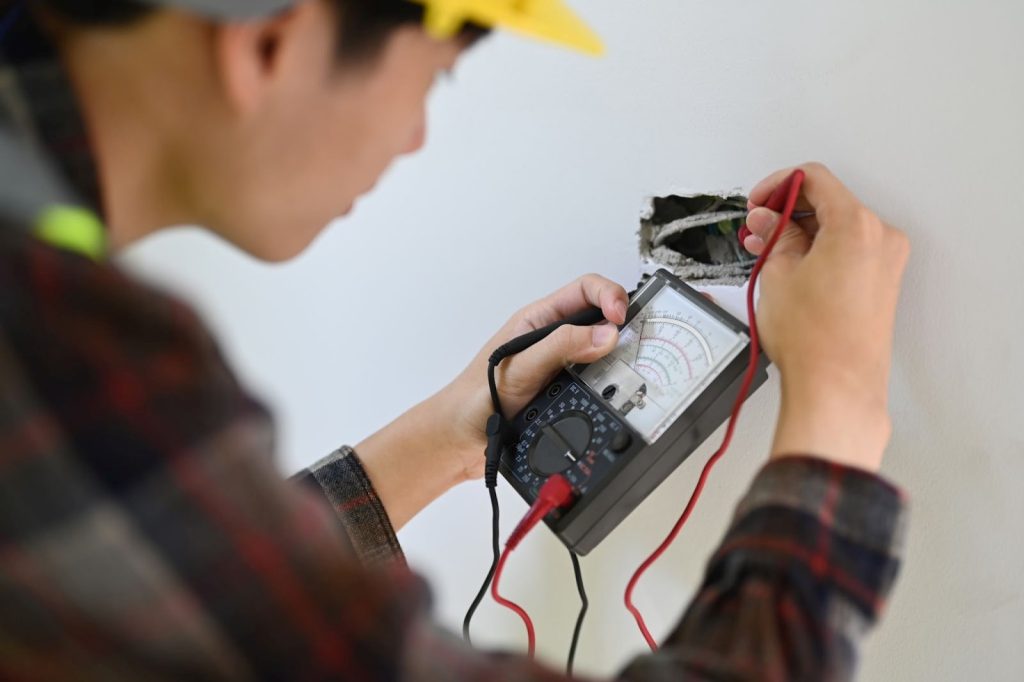Portable Appliance Testing (PAT) is a crucial aspect of ensuring the safety of electrical appliances in various settings, including homes. This comprehensive guide explores the legal requirements surrounding PAT testing, defines what PAT testing is, and delves into the responsibilities of different parties. Additionally, we discuss whether home appliances need PAT testing, who should carry out the tests, and the benefits of compliance.
What is PAT Testing?
Portable Appliance Testing, commonly known as PAT testing, is a process designed to check the safety of electrical appliances. This involves a series of visual inspections and electrical tests to identify potential hazards, faulty items, or items that may pose a risk to users. The primary goal is to ensure that electrical appliances are in a safe condition for use.
Specific Testing for Different Appliances
Different appliances pose different levels of risk, and thus, they may require specific tests. For example, Class I appliances have a protective earth connection, while Class II appliances rely on double insulation. The testing procedures need to account for these differences to ensure comprehensive safety checks.
- Washing Machines: These are typically Class I appliances and require thorough testing of the power supply, insulation resistance, and earth continuity.
- Laptops and Mobile Phone Chargers: Class II appliances with double insulation, requiring insulation resistance checks and visual inspections.
- Vending Machines and Coffee Machines: These commercial appliances may have additional testing requirements due to their complexity and constant use.
- Vacuum Cleaners and Power Tools: Common household tools that need regular testing to ensure safe working conditions and mitigate electrical risks.
Legal Requirements and Responsibilities
The legal responsibility of PAT testing is a confusing one as nowhere is PAT testing specifically cited as a necessity. However, tenancy and workplace safety acts are in place which encompass PAT testing as an ideal solution.
Responsibility of Business Owners
Business owners have a legal duty to maintain electrical appliances in a safe condition. The Health and Safety at Work Act 1974 and the Electricity at Work Regulations 1989 outline the legal obligations of employers concerning electrical safety to keep employees safe. Business owners are required to ensure that all portable electrical appliances used in the workplace are safe and regularly maintained.
Responsibility of Landlords
Landlords also have a responsibility to ensure the safety of electrical appliances provided in rented accommodation. The Landlord and Tenant Act 1985 requires landlords to keep electrical installations in good repair and proper working order. While PAT testing is not a legal requirement for landlords, they are obligated to ensure that the electrical appliances provided are safe to use.
Responsibility of Individuals in Their Own Homes
In a domestic setting, the responsibility for electrical appliance safety primarily falls on the individual homeowner or tenant. Although there is no specific legal requirement for PAT testing in homes, ensuring that appliances are visually inspected and used in accordance with the manufacturer’s guidelines is essential for safety.
Who is responsible for PAT testing?
Do Home Appliances Need PAT Testing?
The legal obligation for PAT testing is more pronounced in commercial and public settings. For home appliances, the emphasis is on user responsibility. While there is no strict legal requirement for PAT testing in homes, regular visual inspections and adherence to safety guidelines are crucial for preventing accidents and ensuring the longevity of appliances.
Who Should Carry Out PAT Tests?
PAT tests should be conducted by a competent person. A competent person is someone with the necessary knowledge, training, and experience to perform the tests accurately. This may include in-house maintenance staff or external professionals specializing in electrical safety and testing equipment.
How Often Should You Test Devices?
The frequency of inspections and risk assessments depends on the type of appliance and the environment in which it is used. High-risk environments, such as construction sites, may require more frequent testing than low-risk environments. As a general rule of thumb, a routine inspection with a testing frequency of every 12-48 months is recommended.
Benefits of PAT Testing
There are a wide range of benefits to testing your electrical equipment from ensuring the safety of your employees and tenants to meeting legislation and improving your reputation. Here are some of the benefits of PAT testing electrical items:
- Prevention of Electrical Accidents: Regular PAT testing helps identify potential hazards and faults in electrical appliances, reducing the risk of electrical accidents such as shocks and fires.
- Compliance with Health and Safety Regulations: Compliance with health and safety regulations is a legal requirement for businesses. PAT testing ensures that businesses meet these regulations, protecting both employees and customers.
- Extended Appliance Lifespan: Identifying and addressing faults through PAT testing can extend the lifespan of electrical appliances, saving businesses and individuals from the cost of frequent replacements.
- Enhanced Reputation: For businesses, a commitment to electrical safety, as demonstrated through PAT testing, enhances their reputation and fosters trust among customers and employees.
Professional PAT Testing Services
At Legionella Risk and PAT, we specialize in ensuring the safety and compliance of electrical systems. Our expert team conducts thorough examinations of electrical appliances, adhering to the highest safety standards and regulations.
Our safety inspection checks include:
- Visual checks of all appliances;
- Inspection of plugs and wiring;
- Cable inspections and connection tests;
- Identifying continuity and testing it;
- Lead polarity checks;
- Insulation resistance tests (electric shock prevention).
By prioritizing safety and compliance with established standards, our services contribute to the overall well-being of workplaces and homes, providing peace of mind to clients regarding the electrical safety of their environments.


